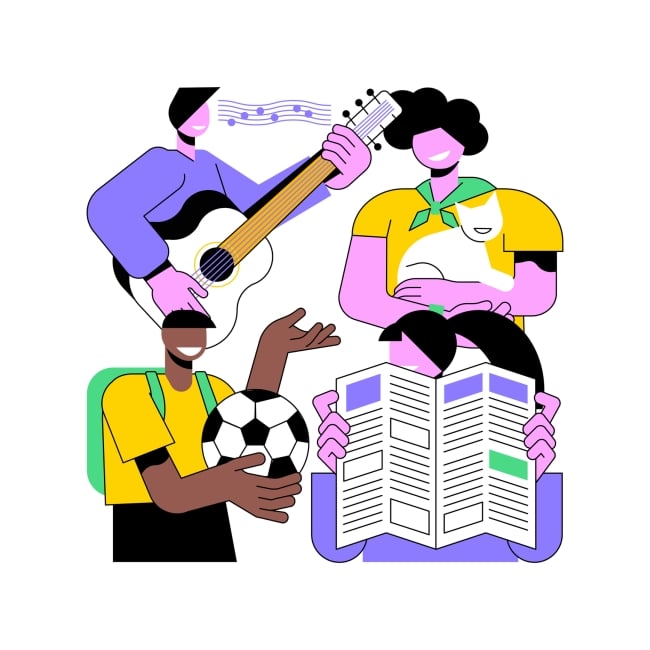You have /5 articles left.
Sign up for a free account or log in.

Visual Generation/iStock/Getty Images Plus
Captain of the speech and debate team, Key Club lieutenant governor, Student Government representative, Science Bowl, wrestling team, tae kwon do instructor. These are just six of the 10 activities I listed when filling out the extracurricular involvement section of my college applications back in 2013. We were allowed to list up to 10 on the Common Application platform, and I was determined to max out.
During high school, extracurriculars were my favorite part of school because I got to hang out with friends. Still, I sometimes found myself tired, overwhelmed and stressed. I would tell myself, “I need to stay up all night to practice for the tournament. I need to win the tournament to make it to the state championships. I need to have the strongest application possible to get into a ‘good’ school.” It felt like getting into college would determine the trajectory of the rest of my life, and extracurriculars were a way to shape that future.
Aside from the toll on my mental and physical health, my high school activities also reflect how extracurricular involvement is shaped by race and class. I had the opportunity to pursue these activities because my family could support my endeavors. Even though some activities were technically free, they still cost time, a luxury that many cannot afford due to work and familial obligations.
I think about these issues when I interview prospective students as an alumni interviewer for my alma mater, the University of Pennsylvania. Every year, I interview five to seven applicants, and I am always blown away by their accomplishments. I’ve interviewed soon-to-be Eagle Scouts, app developers and former interns at prestigious companies. From ice cream parlor scoopers to Girls Nation attendees, they are all impressive.
I thought about them when working as a research assistant for the College Admissions Futures Co-Laborative on a project exploring inequality related to nonstandardized components of college applications, funded by the Bill & Melinda Gates Foundation. In our recently released study, we analyzed the extracurricular involvement of nearly six million applications from more than 860,000 students submitted through the Common App—the largest study to date examining both quantity and quality of extracurricular activities.
Our team looked at two ways that students reported extracurricular involvement: top-level leadership roles (e.g., president, founder), and the reporting of honors and awards in activity descriptions. On average, white, Asian American, more affluent and private school students listed more activities, more top-level leadership roles, and were more likely to use terms reflecting excellence, honors and awards when describing their involvement. While Black, Latinx and Indigenous students listed fewer activities over all, they reported holding top-level leadership roles at a similar rate as white and Asian American students. In other words, underrepresented, racially minoritized students were just as likely to hold leadership roles in their organizations, but they listed fewer activities, likely due to lack of opportunity, finances and other privileges.
Our results show how extracurricular activities are not a level playing field, mirroring some of my own experiences as an alumni interviewer. I once interviewed a student who said they appreciated that they had more time to ride horses as a result of the pandemic. Later I interviewed another whose father passed away from COVID, which made them take on more responsibilities like working and taking care of siblings. Despite the notable achievements of all of the students I have interviewed, only one of my interviewees has been admitted to Penn—a recruited athlete, reflecting research on how recruited athletes, who are more likely to come from affluent backgrounds, receive an edge in elite college admissions.
Our work is not a call to return to requiring the SAT/ACT, but institutions need to have serious conversations about how extracurricular activities should be weighed given persistent inequality. Applicants may see extracurricular involvement as a way to demonstrate their passions and individuality, and they still provide important insight into applicants. Still, admissions officers should be trained on how to fully consider relevant contexts that shape extracurricular involvement like finances and opportunity.
Based on our findings, we recommend that institutions and college application platforms consider reducing the maximum number of activities that students can list. Reducing the maximum number of extracurricular activities may reduce stress and enable students to prioritize, rather than trying to do it all just to “max out” on the number of activities. It also recognizes that not all students have the opportunity to participate in an especially high number of activities. Further, we should all scrutinize how elite colleges value activities that not all students have equal opportunity to participate in, such as crew and fencing. Finally, our findings underscore the necessity of race-conscious admissions in order to recognize how both race and class shape opportunity for extracurricular involvement.
I stayed in my extracurriculars because they were fun, but also because I thought I needed them to get into college. I wonder how many of the students I interview feel the same way. I wonder what else they would be doing with their lives if they could remove the pressure of needing to do so much and simply focus on the things that bring them the most joy. Yes, these students are applying to a highly selective institution, so it can be expected that they are motivated and involved. Still, it feels like too many students are exhausted and overwhelmed from trying to get into college. They should not have to push their bodies and minds past their limit in the hope that it will help their chances of getting into college.







